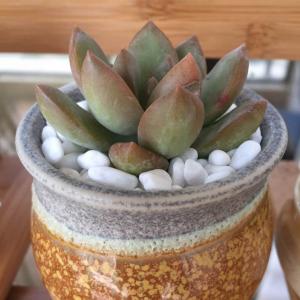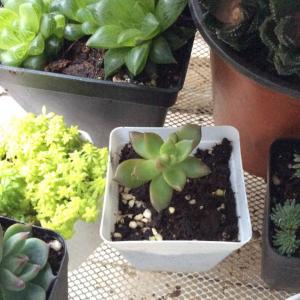动态 (221)
格桑花
2023年11月18日

Introduction
Challenging times can have a significant impact on our emotional and mental well-being. It is crucial to prioritize self-care and adopt strategies that help us navigate these difficult periods with resilience and strength. In this guide, we will explore effective strategies for maintaining emotional and mental well-being during challenging times.Practice Self-Care
Self-care is essential for maintaining emotional and mental well-being. During challenging times, it becomes even more important to prioritize self-care activities that help restore balance and recharge your energy. Some self-care practices include: - Getting enough sleep - Eating a balanced and nutritious diet - Engaging in regular physical exercise - Spending time in nature - Engaging in activities you enjoy, such as hobbies or creative outlets - Setting boundaries and saying no when necessary - Taking breaks and allowing yourself to restSeek Support
Reach out to your support system during challenging times. Connect with friends, family, or support groups to share your feelings and experiences. Talking about your emotions and challenges can provide comfort, validation, and perspective. If needed, consider seeking professional help from therapists or counselors who can provide guidance and support.Practice Mindfulness and Meditation
Mindfulness and meditation practices can help calm the mind, reduce stress, and improve overall well-being. Incorporate mindfulness into your daily routine through activities such as: - Mindful breathing exercises - Body scans to release tension - Mindful eating to savor your food - Engaging in mindful movement, such as yoga or walking meditation These practices can help you stay present, reduce anxiety, and cultivate a sense of inner calmness.Limit News and Social Media Consumption
Constant exposure to distressing news and social media can contribute to heightened stress and anxiety. Set limits on your news and social media consumption to protect your mental well-being. Choose reliable sources of information and allocate specific times to catch up on news, rather than continuously scrolling through social media feeds.Establish a Routine
Creating a routine during challenging times can provide a sense of stability and structure. Establish daily habits and schedules that include activities that bring you joy and help you maintain a sense of normalcy. This can include regular exercise, meal times, work or study schedules, and dedicated time for relaxation and self-care.Engage in Positive Self-Talk
Be mindful of your self-talk and strive to maintain a positive and compassionate inner dialogue. Replace negative or self-critical thoughts with affirmations or positive statements. Remind yourself of your strengths, resilience, and past successes. Practice self-compassion and treat yourself with kindness and understanding.Focus on What You Can Control
During challenging times, it is easy to feel overwhelmed by circumstances beyond our control. Instead, focus on what you can control. Direct your energy towards actions that contribute to your well-being and actively problem-solve within your sphere of influence. Accept the things you cannot change and practice letting go of what is beyond your control.Engage in Activities that Bring Joy
Engage in activities that bring you joy and offer a sense of fulfillment. This could be hobbies, creative endeavors, spending time with loved ones, or pursuing personal goals. These activities can serve as a source of motivation, distraction, and pleasure during challenging times.Conclusion
Maintaining emotional and mental well-being during challenging times requires intentional effort and self-care. By practicing self-care, seeking support, cultivating mindfulness, limiting news consumption, establishing routines, engaging in positive self-talk, focusing on what you can control, and finding joy in activities, you can navigate difficult periods with resilience and strength. Remember, it is essential to be patient and kind to yourself as you navigate these challenges and seek professional help if needed.
文章
格桑花
2023年11月18日

Introduction
Gratitude is a powerful practice that can significantly enhance our well-being and overall happiness. By cultivating gratitude and incorporating daily gratitude rituals into our lives, we can shift our focus towards positivity, improve our mental outlook, and deepen our appreciation for the present moment. In this guide, we will explore the importance of gratitude, its benefits, and provide practical tips for practicing gratitude rituals on a daily basis.The Importance of Gratitude
Gratitude involves acknowledging and appreciating the positive aspects of our lives, both big and small. Here are some key reasons why cultivating gratitude is important: 1. Positive mindset: Gratitude helps shift our focus from what is lacking to what we already have. It encourages a positive mindset and fosters a sense of contentment and fulfillment. 2. Improved well-being: Regularly practicing gratitude has been linked to increased happiness, life satisfaction, and overall well-being. It can reduce stress, anxiety, and depression, and promote a more optimistic outlook on life. 3. Stronger relationships: Expressing gratitude towards others strengthens our relationships and fosters a sense of connection. It encourages kindness, empathy, and appreciation for the people in our lives. 4. Resilience and coping: Gratitude can help us build resilience and cope with challenging situations. It reminds us of the positive aspects of our lives, even during difficult times, and helps us find silver linings.Practical Tips for Daily Gratitude Rituals
Incorporating daily gratitude rituals into your routine can help you cultivate a grateful mindset and experience the benefits of gratitude. Here are some practical tips to get started: 1. Keep a gratitude journal: Set aside a few minutes each day to write down three things you are grateful for. Reflect on the positive experiences, people, or moments that brought you joy or made you feel thankful. This practice encourages you to actively seek out and appreciate the good in your life. 2. Practice gratitude meditation: Set aside a few minutes each day for a gratitude meditation. Find a quiet space, close your eyes, and focus on the things you are grateful for. Visualize them and allow the feelings of gratitude to fill your heart. You can use guided gratitude meditation apps or simply sit in silence, focusing on your breath and gratitude. 3. Share gratitude with others: Express your gratitude to others by writing thank-you notes, sending appreciation messages, or simply telling someone in person how much you appreciate them. Sharing gratitude not only benefits the receiver but also enhances your own sense of connection and well-being. 4. Create a gratitude jar: Get a jar and some small pieces of paper. Each day, write down something you are grateful for and place it in the jar. Over time, the jar will fill up with little reminders of the positive aspects of your life. On difficult days, you can revisit these notes to uplift your spirits. 5. Practice gratitude during meals: Before starting a meal, take a moment to express gratitude for the food on your plate, the people you are sharing the meal with, and the nourishment it provides. This simple act of gratitude can help you savor your food and cultivate mindfulness during meals. 6. Find gratitude in everyday moments: Train yourself to notice and appreciate the small moments of joy and beauty in your daily life. It could be the warmth of a morning cup of tea, a beautiful sunset, or a kind gesture from a stranger. Pause and acknowledge these moments, allowing gratitude to fill your heart. 7. Set reminders: Use visual cues or technology to remind yourself to practice gratitude throughout the day. Set up notifications on your phone or place sticky notes in visible areas to prompt you to pause and express gratitude. 8. Reflect before sleep: Before going to bed, take a moment to reflect on your day and identify three things you are grateful for. This practice helps shift your focus towards positivity and ends the day on a grateful note.Conclusion
Cultivating gratitude and practicing daily gratitude rituals can have a profound impact on our well-being and overall outlook on life. By incorporating the tips mentioned above into your daily routine, you can cultivate a grateful mindset, enhance your happiness, and deepen your appreciation for the present moment. Remember, gratitude is a practice that requires consistency and intention. Embrace it as a daily ritual and experience the transformative power of gratitude in your life.
文章
格桑花
2023年11月18日

Exploring Different Types of Wellness Practices: Yoga, Tai Chi, and More
Introduction
Wellness practices encompass a wide range of activities that promote physical, mental, and emotional well-being. They can help reduce stress, improve flexibility, enhance mindfulness, and cultivate a sense of inner balance. In this guide, we will explore some popular wellness practices, including yoga, Tai Chi, meditation, and mindful breathing. By understanding these practices, you can choose the ones that resonate with you and incorporate them into your wellness routine.Yoga
Yoga is a holistic practice that combines physical postures, breath control, meditation, and ethical principles. It originated in ancient India and has since gained popularity worldwide. Some key benefits of practicing yoga include: - Improved flexibility, strength, and balance - Enhanced body awareness and posture - Reduced stress and anxiety - Increased relaxation and better sleep - Improved mental clarity and focus - Promotion of mindfulness and self-awareness Yoga offers various styles, such as Hatha, Vinyasa, Ashtanga, and Kundalini, each with its own unique focus and intensity. Whether you prefer a vigorous flow or a gentle restorative practice, yoga can be adapted to suit your needs and fitness level.Tai Chi
Tai Chi is a traditional Chinese martial art that combines slow, flowing movements with deep breathing and meditation. It emphasizes relaxation, balance, and harmony between mind and body. Some benefits of practicing Tai Chi include: - Improved balance, flexibility, and coordination - Reduced stress and anxiety - Enhanced relaxation and mindfulness - Increased energy and vitality - Promotion of joint health and mobility Tai Chi is characterized by its smooth, continuous movements that flow from one posture to another. It can be practiced by people of all ages and fitness levels, making it accessible to a wide range of individuals.Meditation
Meditation is a practice that involves training the mind to focus and redirect thoughts, leading to a state of mental clarity and calmness. It has been practiced for thousands of years in various cultures and traditions. Some benefits of meditation include: - Reduced stress and anxiety - Increased self-awareness and mindfulness - Improved concentration and focus - Enhanced emotional well-being and resilience - Promotion of relaxation and better sleep Meditation can be practiced in different ways, such as mindfulness meditation, loving-kindness meditation, or transcendental meditation. It can be done sitting, walking, or even lying down, making it flexible and adaptable to different lifestyles.Mindful Breathing
Mindful breathing is a simple yet powerful practice that involves bringing full attention to the breath and observing it without judgment. It is a foundational aspect of many wellness practices, including yoga and meditation. Benefits of practicing mindful breathing include: - Reduced stress and tension - Improved focus and mental clarity - Increased relaxation and calmness - Enhanced self-regulation and emotional well-being - Promotion of present-moment awareness To practice mindful breathing, find a comfortable position, close your eyes, and bring your attention to the sensation of your breath as it enters and leaves your body. Notice the rise and fall of your abdomen or the sensation of air passing through your nostrils. Whenever your mind wanders, gently bring your attention back to the breath.Conclusion
Wellness practices offer numerous benefits for our physical, mental, and emotional well-being. Whether you choose to explore yoga, Tai Chi, meditation, or mindful breathing, each practice provides unique tools and techniques to support your overall wellness. Experiment with different practices and find what resonates with you. Remember, consistency and regularity are key to experiencing the full benefits of these wellness practices. Embrace them as part of your routine and enjoy the transformative effects on your well-being.
文章
格桑花
2023年11月18日

Introduction
Quality sleep is essential for our physical health, mental well-being, and overall functioning. However, many individuals struggle with sleep-related issues, which can negatively impact their daily lives. By understanding the importance of quality sleep and implementing effective sleep hygiene practices, we can improve our sleep patterns and reap the benefits of restorative sleep. In this guide, we will explore the significance of quality sleep and provide practical tips for enhancing sleep hygiene.The Importance of Quality Sleep
Quality sleep plays a vital role in various aspects of our lives. Here are some key reasons why quality sleep is important: 1. Physical health: Adequate sleep supports a healthy immune system, helps regulate hormonal balance, and promotes proper functioning of the cardiovascular and metabolic systems. It also contributes to better weight management and reduces the risk of chronic diseases such as diabetes and obesity. 2. Mental well-being: Sleep is crucial for maintaining optimal cognitive function, memory consolidation, and emotional regulation. Sufficient sleep enhances focus, concentration, and problem-solving abilities. It also improves mood, reduces the risk of developing mental health disorders, and supports overall mental well-being. 3. Energy and productivity: Quality sleep replenishes energy levels and enhances productivity. When well-rested, individuals experience improved alertness, creativity, and decision-making skills. They are better equipped to handle daily tasks and challenges efficiently. 4. Emotional regulation: Lack of sleep can lead to heightened emotional reactivity, irritability, and difficulty managing stress. Quality sleep helps regulate emotions and promotes emotional stability, allowing individuals to navigate daily life with a more balanced mindset.Tips for Improving Sleep Hygiene
Sleep hygiene refers to the practices and habits that promote healthy sleep. By incorporating the following tips into your routine, you can improve your sleep hygiene and enhance the quality of your sleep: 1. Establish a consistent sleep schedule: Go to bed and wake up at the same time each day, even on weekends. This helps regulate your body's internal clock and promotes a more consistent sleep-wake cycle. 2. Create a sleep-friendly environment: Make your bedroom a calm and comfortable space for sleep. Ensure your mattress, pillows, and bedding are supportive and suitable for your needs. Keep the room cool, dark, and quiet to promote optimal sleep conditions. 3. Limit exposure to screens before bed: The blue light emitted by electronic devices can disrupt your sleep-wake cycle. Avoid using screens (such as smartphones, tablets, and computers) at least an hour before bedtime. Instead, engage in relaxing activities like reading a book or practicing relaxation techniques. 4. Practice a relaxing bedtime routine: Establish a pre-sleep routine that signals to your body that it's time to unwind and prepare for sleep. This can include activities like taking a warm bath, listening to calming music, practicing relaxation exercises, or journaling. 5. Avoid stimulants and heavy meals close to bedtime: Limit your consumption of caffeine, nicotine, and alcohol, as these substances can interfere with sleep. Additionally, avoid heavy meals close to bedtime, as they can cause discomfort and disrupt sleep quality. 6. Engage in regular exercise: Regular physical activity can promote better sleep. However, it's important to time your exercise sessions appropriately. Avoid exercising too close to bedtime, as it can stimulate your body and make it difficult to fall asleep. Aim to finish your workout at least a few hours before bedtime. 7. Manage stress and anxiety: High levels of stress and anxiety can interfere with sleep. Implement stress management techniques such as meditation, deep breathing exercises, or engaging in calming activities to promote relaxation and reduce anxiety before bed. 8. Limit daytime napping: If you have trouble sleeping at night, it's best to limit daytime napping. If you do nap, keep it short (around 20-30 minutes) and avoid napping too close to your bedtime. 9. Evaluate your sleep environment: Assess your sleep environment for any potential disruptions, such as noise, uncomfortable temperature, or a worn-out mattress. Make necessary adjustments to create a more conducive environment for quality sleep. 10. Seek professional help if needed: If you consistently struggle with sleep issues that significantly impact your daily life, consider seeking help from a healthcare professional or sleep specialist. They can provide guidance, diagnose any underlying sleep disorders, and recommend appropriate treatments.Conclusion
Quality sleep is crucial for our physical health, mental well-being, and overall functioning. By prioritizing sleep hygiene and implementing the tips mentioned above, you can improve your sleep patterns and reap the benefits of restorative sleep. Remember, everyone's sleep needs are unique, so it's essential to find what works best for you. Embrace a consistent sleep routine, create a sleep-friendly environment, and practice relaxation techniques to enhance your sleep hygiene and enjoy the positive impact of quality sleep on your overall well-being.
文章
格桑花
2023年11月17日

Introduction
Maintaining healthy eating habits is vital for our overall well-being. In today's fast-paced world, it's easy to fall into unhealthy eating patterns and consume food mindlessly. However, by nurturing healthy eating habits and practicing mindful eating, we can develop a more positive relationship with food, improve our nutritional intake, and enhance our overall health. In this guide, we will explore the importance of healthy eating habits, delve into the concept of mindful eating, and provide practical tips to incorporate these practices into your daily life.Understanding Healthy Eating Habits
Healthy eating habits refer to the conscious choices we make regarding the foods we consume. These habits focus on consuming a balanced diet rich in essential nutrients while minimizing the intake of processed and unhealthy foods. Healthy eating habits involve: 1. Eating a variety of nutrient-dense foods: Include a wide range of fruits, vegetables, whole grains, lean proteins, and healthy fats in your diet to ensure you receive all the necessary vitamins, minerals, and antioxidants. 2. Portion control: Pay attention to portion sizes and avoid overeating. Use smaller plates, practice mindful serving sizes, and listen to your body's hunger and fullness cues. 3. Hydration: Drink an adequate amount of water throughout the day to stay hydrated. Limit the consumption of sugary beverages and opt for water, herbal teas, or infused water instead. 4. Meal planning: Plan your meals and snacks in advance to ensure you have nutritious options readily available. This can help prevent impulsive and unhealthy food choices. 5. Cooking at home: Prepare meals at home as much as possible, as this allows you to have control over the ingredients and cooking methods used. Home-cooked meals tend to be healthier than restaurant or processed foods.The Concept of Mindful Eating
Mindful eating involves paying deliberate attention to the present moment and focusing on the sensory experience of eating. It encourages awareness of physical and emotional sensations, thoughts, and behaviors related to food. By practicing mindful eating, we can develop a healthier relationship with food, make conscious choices, and truly enjoy the eating experience. Here are some key principles of mindful eating: 1. Eating with intention: Be intentional and purposeful when choosing what to eat. Consider the nutritional value and how the food will nourish your body. 2. Slow down and savor: Eat slowly and savor each bite. Pay attention to the taste, texture, and aroma of the food. Chew thoroughly and appreciate the flavors. 3. Listen to your body: Tune in to your body's hunger and fullness cues. Eat when you are hungry and stop when you are comfortably satisfied. Avoid eating out of boredom, stress, or other emotional triggers. 4. Engage all your senses: Take the time to engage all your senses while eating. Notice the colors, smells, sounds, and textures of the food. This helps create a more enjoyable and mindful eating experience. 5. Non-judgmental awareness: Observe your thoughts and emotions without judgment. Be aware of any negative or guilt-inducing thoughts related to food and work towards cultivating a positive and non-judgmental mindset.Practical Tips for Nurturing Healthy Eating Habits and Mindful Eating
Here are some practical tips to help you incorporate healthy eating habits and mindful eating practices into your daily life: 1. Plan and prepare meals ahead of time: Set aside time each week to plan your meals and snacks. Prepare and pack your meals in advance to avoid impulsive and unhealthy choices. 2. Create a calm eating environment: Find a quiet and peaceful space to eat. Minimize distractions such as television or electronic devices. Create a pleasant atmosphere that promotes mindful eating. 3. Use all your senses: Take a moment before eating to appreciate the visual appeal, aroma, and texture of your food. Chew slowly and savor the flavors. 4. Practice portion control: Use smaller plates and bowls to help control portion sizes. Pay attention to your body's hunger and fullness cues and stop eating when you feel satisfied. 5. Be mindful of emotional eating: Notice if you tend to eat in response to emotions such as stress or sadness. Find alternative ways to cope with emotions, such as engaging in physical activity, journaling, or talking to a supportive friend. 6. Eat mindfully without distractions: Avoid eating in front of the television, computer, or while working. Give your full attention to the eating experience and enjoy the food without distractions. 7. Be flexible and non-restrictive: Allow yourself to enjoy your favorite foods in moderation. Adopt a balanced approach that includes a variety of nutritious foods while still indulging in occasional treats. 8. Practice gratitude: Before starting your meal, take a moment to express gratitude for the nourishment and the effort put into preparing the food. This can help cultivate a positive mindset and appreciation for the eating experience.Conclusion
By nurturing healthy eating habits and practicing mindful eating, we can improve our relationship with food, enhance our nutritional intake, and promote overall well-being. Incorporate these practices into your daily life by being intentional with your food choices, savoring each bite, listening to your body's cues, and creating a calm eating environment. Remember, developing healthy eating habits and practicing mindful eating is a journey that requires patience and self-compassion. Embrace these practices and enjoy the benefits of a more positive and mindful approach to eating.
文章
格桑花
2023年11月17日

Introduction
Managing stress and anxiety is essential for maintaining overall well-being. While traditional methods such as therapy and medication are effective, holistic approaches offer a more comprehensive and natural way to address these challenges. Holistic approaches focus on treating the whole person - mind, body, and spirit. In this guide, we will explore various holistic approaches to managing stress and anxiety and provide insights into their benefits.Mindfulness and Meditation
Mindfulness and meditation practices are powerful tools for stress and anxiety management. By focusing on the present moment and cultivating a non-judgmental awareness of thoughts and emotions, mindfulness helps individuals reduce stress and enhance overall well-being. Meditation techniques, such as deep breathing exercises and guided imagery, promote relaxation, reduce the physiological effects of stress, and improve mental clarity. Regular practice of mindfulness and meditation can help individuals develop resilience and cope better with stressors.Exercise and Physical Activity
Engaging in regular physical activity is not only beneficial for physical health but also plays a significant role in managing stress and anxiety. Exercise stimulates the release of endorphins, which are natural mood-lifters. It reduces the levels of stress hormones, such as cortisol, and promotes a sense of well-being. Whether it's going for a walk, practicing yoga, or participating in a sport, finding an enjoyable form of exercise can provide a healthy outlet for stress and anxiety, improve sleep quality, and boost overall mood.Healthy Diet and Nutrition
Maintaining a healthy diet and proper nutrition is crucial for managing stress and anxiety. Certain foods, such as those rich in omega-3 fatty acids (e.g., fatty fish, walnuts), antioxidants (e.g., berries, dark chocolate), and magnesium (e.g., leafy greens, almonds), have been shown to reduce stress and promote relaxation. Avoiding or minimizing the consumption of caffeine, alcohol, and processed foods can also help stabilize mood and energy levels. A well-balanced diet that includes whole grains, lean proteins, fruits, and vegetables provides the necessary nutrients for optimal brain function and emotional well-being.Sleep Hygiene
Getting adequate sleep is vital for managing stress and anxiety. Poor sleep can exacerbate stress levels and contribute to increased anxiety. Establishing a consistent sleep routine, creating a relaxing sleep environment, and practicing good sleep hygiene habits can improve sleep quality. This includes avoiding electronic devices before bed, keeping the bedroom dark and quiet, and engaging in relaxation techniques, such as reading or taking a warm bath, to unwind before sleep. Prioritizing sleep and ensuring a sufficient amount of restful sleep can significantly reduce stress and anxiety.Herbal Remedies and Supplements
Certain herbal remedies and supplements have been used for centuries to manage stress and anxiety. Herbs such as chamomile, lavender, valerian root, and passionflower have calming properties and can promote relaxation. Supplements like omega-3 fatty acids, B vitamins, and magnesium have also been found to support a healthy nervous system and reduce symptoms of anxiety. However, it is important to consult with a healthcare professional before incorporating any herbal remedies or supplements into your routine to ensure safety and effectiveness.Alternative Therapies
Various alternative therapies can complement traditional approaches to managing stress and anxiety. Techniques such as acupuncture, acupressure, aromatherapy, and massage therapy have shown promise in reducing stress, promoting relaxation, and improving overall well-being. These therapies work by stimulating specific points on the body, using essential oils, or applying gentle pressure to release tension and restore balance. Incorporating such therapies into your self-care routine can provide additional support in managing stress and anxiety.Social Support and Connection
Building and maintaining strong social connections is essential for managing stress and anxiety. Sharing concerns and experiences with trusted friends, family members, or support groups can provide emotional support and perspective. Engaging in social activities and fostering meaningful relationships can help reduce feelings of isolation and promote a sense of belonging. Whether through joining clubs, volunteering, or participating in group activities, social support and connection play a vital role in managing stress and anxiety.Conclusion
Holistic approaches to managing stress and anxiety offer a comprehensive and natural way to promote overall well-being. By incorporating practices such as mindfulness and meditation, engaging in regular physical activity, maintaining a healthy diet, prioritizing sleep, utilizing herbal remedies and supplements, exploring alternative therapies, and fostering social support, individuals can effectively manage stress and anxiety. Remember, each person's journey is unique, so it's essential to find the combination of approaches that works best for you. Embrace a holistic mindset and take proactive steps towards managing stress and anxiety for a healthier and more balanced life.
文章
格桑花
2023年11月17日

Introduction
In today's fast-paced and demanding world, achieving a healthy work-life balance has become essential for overall wellness. Balancing the demands of work with personal life is crucial to prevent burnout, reduce stress, and maintain physical and mental well-being. In this guide, we will explore the importance of work-life balance, provide strategies to achieve it, and discuss the benefits it can bring to your overall wellness.The Significance of Work-Life Balance
Work-life balance refers to the equilibrium between the time and energy devoted to work and personal life. It involves effectively managing responsibilities, commitments, and activities in both domains to ensure a sense of fulfillment and satisfaction. A healthy work-life balance allows individuals to prioritize their well-being, relationships, and personal interests alongside their professional commitments.Strategies for Achieving Work-Life Balance
Achieving work-life balance requires deliberate effort and planning. Here are some strategies to help you create a healthier balance: 1. Set Boundaries: Establish clear boundaries between work and personal life. Define specific times for work and leisure activities and avoid allowing work to spill over into personal time. 2. Prioritize Self-Care: Make self-care a priority by engaging in activities that promote physical and mental well-being. This can include regular exercise, adequate sleep, healthy eating, and relaxation techniques such as meditation or yoga. 3. Delegate and Ask for Help: Learn to delegate tasks and responsibilities at work and in personal life. Don't hesitate to ask for help when needed, whether it's from colleagues, family members, or friends. 4. Practice Effective Time Management: Develop effective time management skills to maximize productivity and minimize time wastage. Prioritize tasks, set realistic deadlines, and avoid multitasking, which can reduce efficiency and increase stress. 5. Establish Work-Life Boundaries: Create physical and mental boundaries between work and personal life. Designate a specific workspace at home if you work remotely and avoid checking work-related emails or messages during personal time. 6. Disconnect from Technology: Take regular breaks from technology and establish "unplugged" periods to disconnect from work-related notifications and distractions. Use this time to engage in activities that promote relaxation and personal connection. 7. Nurture Relationships: Allocate quality time for loved ones and maintain strong personal relationships. Engage in activities together, communicate openly, and make time for socializing and bonding. 8. Pursue Hobbies and Interests: Make time for hobbies and activities that bring you joy and fulfillment. Engaging in activities outside of work can provide a sense of purpose and balance, fostering overall well-being.The Benefits of Work-Life Balance
Creating a healthy work-life balance offers numerous benefits for overall wellness: 1. Reduced Stress: Balancing work and personal life helps to alleviate the stress associated with long work hours and constant demands. It allows for more time to relax, recharge, and engage in activities that bring joy and fulfillment. 2. Enhanced Mental Well-being: Prioritizing personal life and engaging in activities outside of work can improve mental well-being. It provides an opportunity to focus on self-care, fostering resilience, and preventing burnout. 3. Improved Physical Health: Balancing work and personal life promotes better physical health. It allows for time to engage in regular exercise, maintain a healthy diet, and get enough sleep, reducing the risk of chronic illnesses and boosting overall vitality. 4. Increased Productivity: When individuals have a healthy work-life balance, they are more likely to be productive and focused during work hours. Taking breaks and engaging in personal activities can enhance creativity, motivation, and job satisfaction. 5. Stronger Relationships: Work-life balance allows for more time and energy to nurture relationships with family, friends, and loved ones. Strong personal connections contribute to overall happiness, support, and emotional well-being. 6. Enhanced Overall Satisfaction: Achieving a healthy work-life balance leads to greater overall life satisfaction. It allows individuals to pursue their passions, interests, and personal goals, leading to a more fulfilling and well-rounded life.Conclusion
Creating a healthy work-life balance is crucial for overall wellness. By implementing strategies such as setting boundaries, prioritizing self-care, practicing effective time management, nurturing relationships, and pursuing personal interests, individuals can achieve a sense of harmony and fulfillment in both their personal and professional lives. Remember, work is just one aspect of life, and dedicating time to personal well-being is essential for long-term happiness and success. Strive for balance, prioritize self-care, and reap the rewards of a more fulfilling and well-rounded life.
文章
格桑花
2023年11月17日

Introduction
Exercise is not just about physical fitness; it plays a crucial role in maintaining both physical and mental well-being. Engaging in regular exercise has numerous benefits that extend beyond weight management and cardiovascular health. In this guide, we will explore the importance of exercise for both the body and mind and provide insights into how it can contribute to overall well-being.Physical Benefits of Exercise
Regular exercise offers a multitude of physical benefits. Firstly, it helps to maintain a healthy weight by burning calories and building lean muscle mass. Exercise also strengthens the cardiovascular system, improving heart health, lowering blood pressure, and reducing the risk of chronic diseases such as heart disease and diabetes. Additionally, exercise promotes better sleep patterns, boosts energy levels, and enhances overall physical endurance and strength.Mental Benefits of Exercise
Exercise has a profound impact on mental well-being. It triggers the release of endorphins, neurotransmitters that promote feelings of happiness and euphoria. Regular physical activity can reduce symptoms of depression, anxiety, and stress by increasing the production of serotonin, a neurotransmitter associated with mood regulation. Exercise also improves cognitive function, memory, and focus by stimulating the growth of new brain cells and enhancing brain plasticity.Stress Relief and Mood Enhancement
Engaging in physical activity provides a natural and effective way to cope with stress and improve mood. Exercise helps to reduce levels of stress hormones such as cortisol while increasing the production of endorphins, which act as natural mood elevators. Regular exercise can provide a healthy outlet for negative emotions and improve emotional well-being by promoting relaxation and reducing anxiety and symptoms of depression.Boosting Self-confidence and Body Image
Regular exercise can greatly enhance self-confidence and improve body image. As individuals engage in physical activity and witness improvements in their strength, endurance, and physical appearance, they often experience a boost in self-esteem and self-worth. Exercise also promotes body positivity by focusing on what the body can do rather than solely on appearance. This positive self-perception can positively impact mental well-being and overall quality of life.Enhancing Brain Health and Cognitive Function
Exercise has a significant impact on brain health and cognitive function. Physical activity increases blood flow to the brain, delivering oxygen and nutrients that support optimal brain function. Regular exercise has been linked to improved memory, attention, and problem-solving abilities. It can also reduce the risk of cognitive decline and age-related neurodegenerative diseases such as Alzheimer's and dementia.Promoting Better Sleep
Exercise plays a vital role in promoting better sleep. Regular physical activity helps regulate the sleep-wake cycle, allowing for more restful and rejuvenating sleep. Exercise can reduce symptoms of insomnia and improve sleep quality by increasing the amount of deep sleep, which is essential for physical and mental restoration. However, it is important to avoid vigorous exercise close to bedtime, as it can have a stimulating effect and disrupt sleep.Creating Social Connections and Support
Engaging in physical activities, whether individually or in group settings, provides opportunities for social interaction and connection. Joining fitness classes, sports teams, or workout groups can foster a sense of community and support. Social connections formed through exercise can provide emotional support, motivation, and accountability, enhancing overall well-being and reducing feelings of isolation.Incorporating Exercise into Daily Life
Incorporating exercise into daily life does not necessarily mean spending hours at the gym. It can be as simple as taking a walk during lunch breaks, cycling to work, or practicing yoga at home. The key is to find activities that you enjoy and can sustain in the long term. Start with small, achievable goals and gradually increase the intensity and duration of your workouts. Aim for a combination of cardiovascular exercises, strength training, and flexibility exercises for a well-rounded fitness routine.Conclusion
Exercise is a powerful tool for maintaining physical and mental well-being. By engaging in regular physical activity, you can experience numerous benefits, including improved physical fitness, reduced stress, enhanced mood, increased self-confidence, better sleep, and improved cognitive function. Find activities that you enjoy and make exercise a priority in your daily life. Remember, even small steps towards an active lifestyle can have a significant impact on your overall well-being. So, lace up your sneakers, get moving, and reap the rewards of a healthy body and mind.
文章
格桑花
2023年11月17日

Mindfulness and Meditation: Techniques for Cultivating Inner Peace
Introduction
In our fast-paced and often stressful lives, cultivating inner peace has become increasingly important. Mindfulness and meditation are powerful techniques that can help us find tranquility amidst the chaos. By training our minds to focus on the present moment and cultivating a sense of inner awareness, we can reduce stress, improve mental well-being, and experience a deeper sense of peace. In this guide, we will explore the concepts of mindfulness and meditation and provide techniques to incorporate them into your daily life.Understanding Mindfulness
Mindfulness is the practice of intentionally bringing our attention to the present moment, without judgment. It involves observing our thoughts, emotions, and sensations with curiosity and acceptance. By being fully present and aware of our experiences, we can break free from the grip of worries about the past or future, and find peace in the present.Starting a Meditation Practice
Meditation is a formal practice that allows us to cultivate mindfulness. Find a quiet and comfortable space where you can sit or lie down without distractions. Begin by focusing on your breath, observing the sensation of each inhalation and exhalation. When your mind inevitably wanders, gently bring your attention back to the breath. Start with short sessions, gradually increasing the duration as you become more comfortable. Consistency is key, so aim for a regular practice, even if it's just a few minutes each day.Body Scan Meditation
The body scan meditation is a technique to cultivate mindfulness by directing attention to different parts of the body. Start by lying down or sitting comfortably. Close your eyes and bring your awareness to your toes, noticing any sensations without judgment. Gradually move your attention up through your feet, legs, abdomen, chest, arms, and all the way to the top of your head. Observe any sensations, tensions, or areas of relaxation as you scan each body part. This practice helps to ground you in the present moment and increase body awareness.Loving-Kindness Meditation
Loving-kindness meditation involves cultivating feelings of love, compassion, and goodwill towards oneself and others. Begin by sitting comfortably and bringing to mind someone you care about deeply. Silently repeat phrases such as "May you be happy, may you be healthy, may you be safe, may you live with ease." After a few minutes, extend these wishes to yourself, and then gradually include others, such as friends, family, and even difficult individuals. This practice helps to cultivate feelings of compassion, empathy, and connectedness.Walking Meditation
Walking meditation is a form of mindfulness practice that involves bringing awareness to the sensations and movements of walking. Find a quiet and peaceful place, preferably outdoors, where you can walk slowly and without distractions. As you walk, pay attention to each step, feeling the sensation of your feet touching the ground. Notice the movement of your body, the rhythm of your breath, and the sights and sounds around you. If your mind wanders, gently bring your focus back to the act of walking. This practice helps to anchor your attention in the present moment and can be especially beneficial for those who find sitting meditation challenging.Integrating Mindfulness into Daily Life
Beyond formal meditation practices, mindfulness can be incorporated into your daily life. Engage in activities with full presence, whether it's eating, brushing your teeth, or having conversations. Take moments to pause and observe your breath, grounding yourself in the present. Practice gratitude by reflecting on things you appreciate in your life. Use technology mindfully, setting boundaries and taking breaks from screens. By bringing mindfulness to everyday activities, you can cultivate a sense of inner peace throughout the day.Conclusion
Mindfulness and meditation are powerful tools for cultivating inner peace and promoting well-being. By practicing mindfulness, starting a meditation routine, incorporating body scan meditation, loving-kindness meditation, and walking meditation, and integrating mindfulness into daily life, you can experience a greater sense of calm, clarity, and inner peace. Embrace these techniques as a way to navigate the ups and downs of life with greater resilience and harmony. Remember, it's a journey, so be patient and kind to yourself as you cultivate mindfulness and cultivate inner peace.
文章
格桑花
2023年11月17日

Photo by Words as Pictures on StockSnap
Introduction
Embracing change and stepping outside of our comfort zones are essential for personal growth and development. Although change can be uncomfortable and challenging, it is through these experiences that we learn, evolve, and discover our true potential. In this guide, we will explore the importance of embracing change and personal growth outside of our comfort zones and provide strategies to help you navigate these transformative journeys.Embrace a Growth Mindset
Adopting a growth mindset is crucial for embracing change and personal growth. Consider these practices: - Believe that your abilities, talents, and intelligence can be developed through effort and learning. - Embrace challenges as opportunities for growth and see setbacks as learning experiences. - Cultivate curiosity, open-mindedness, and a desire to continuously learn and improve.Challenge Your Comfort Zone
Stepping outside of your comfort zone is necessary for personal growth. Consider these approaches: - Identify areas in your life where you feel comfortable and stagnant, and actively seek new experiences and challenges. - Start with small steps and gradually push your boundaries by taking on tasks or activities that feel slightly uncomfortable. - Embrace the discomfort and see it as a sign of growth and progress.Embrace Failure and Learn from Setbacks
Failure and setbacks are inevitable parts of growth. Consider these strategies: - Reframe failure as feedback and an opportunity to learn and improve. - Reflect on your failures and setbacks, identify lessons learned, and use them as stepping stones for future success. - Develop resilience and perseverance to bounce back from failures and keep moving forward.Set Goals and Take Action
Setting goals and taking action is crucial for personal growth. Consider these steps: - Set clear and specific goals that align with your values and aspirations. - Break down your goals into smaller, manageable steps and create an action plan. - Take consistent action towards your goals, even if it feels uncomfortable or challenging.Seek New Experiences and Expand Your Horizons
Seeking new experiences and expanding your horizons is key to personal growth. Consider these practices: - Step outside of your comfort zone by trying new activities, exploring different cultures, or meeting new people. - Travel to unfamiliar places, engage in new hobbies or interests, and expose yourself to diverse perspectives. - Embrace the unknown and be open to the possibilities that new experiences can bring.Cultivate Self-Reflection and Self-Awareness
Self-reflection and self-awareness are crucial for personal growth outside of comfort zones. Consider these approaches: - Set aside regular time for self-reflection and introspection to gain insights into your thoughts, emotions, and behaviors. - Identify your strengths, weaknesses, and areas for growth. - Challenge your limiting beliefs and develop a deeper understanding of yourself.Seek Support and Surround Yourself with Growth-Minded Individuals
Surrounding yourself with supportive individuals who share a growth mindset can greatly enhance personal growth. Consider these strategies: - Seek support from friends, family, mentors, or coaches who can provide guidance and encouragement. - Engage in communities or groups that foster personal growth and provide a supportive environment. - Surround yourself with individuals who inspire and challenge you to step outside of your comfort zone.Conclusion
Embracing change and personal growth outside of comfort zones is essential for unlocking your true potential and living a fulfilling life. By adopting a growth mindset, challenging your comfort zone, embracing failure, setting goals, seeking new experiences, cultivating self-reflection, and seeking support, you can navigate the transformative journey of personal growth. Remember, personal growth is a lifelong process, and by embracing change and stepping outside of your comfort zone, you open yourself up to new opportunities, learning experiences, and a deeper understanding of yourself and the world around you.
文章
相关用户

















